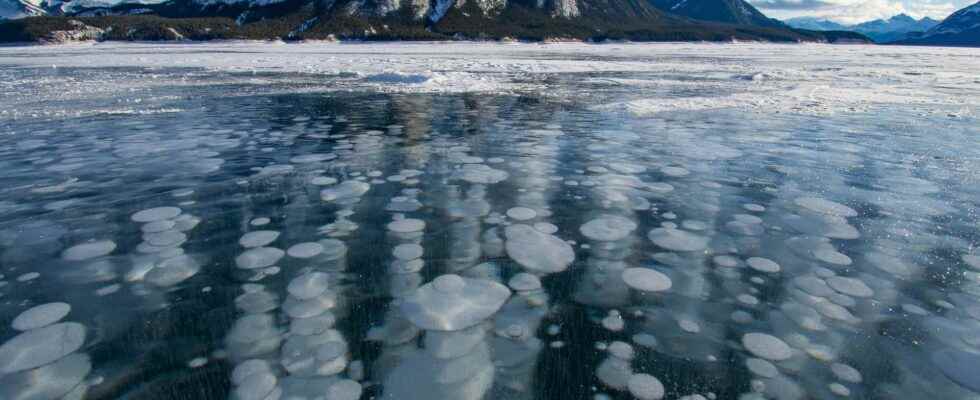You will also be interested
[EN VIDÉO] Will the Gulf Stream disappear? For several years, scientists have been concerned about the possible disappearance of the Gulf Stream due to climate change. Could we then know an apocalyptic scenario similar to that of the film “A day after”?
The planet is warming up, we know that. But this is not the first time that a warming episode has occurred, although the one we are currently experiencing is particularly accelerated by human activities. And the various episodes of warming experienced by the planet leave traces, particularly geological ones. By studying them, it is possible to find events that took place thousands, even millions of years ago. And this is what a team of paleoclimatologists did, in a study published in the journal PNAS. They specifically targeted “a sequence of sediments from the eastern equatorial Atlantic using a wide range of proxies environmental (biological, geochemical or sedimentary indicators which make it possible to empirically quantify the climatic and environmental parameters used for climatic reconstructions, editor’s note) at high resolution chronological “, they describe.
The circulation of the Atlantic Ocean has been modified, the intermediate waters warmed
Thanks to the sediment core collected in the Gulf of Guinea, the team was able to look into the warm episode during the Eemian, between 128,000 and 125,000 years ago. The oceans were then between 1°C and 1.5°C warmer than they are today. But the researchers also noted a particularly hot and short peak duration in intermediate waters. A fact which they explain by a melting ofpure water from Greenland. A small part of the ice cap from Greenland. “Remarkably, a greatly reduced Greenland ice sheet was able to produce enough meltwater to disrupt the density-driven Atlantic Ocean circulation.said in a communicated Syee Weldeab, first author of the study. This has contributed significantly to the significant warming of the intermediate waters that we have reconstructed. »
In normal times, it is the density variations that create the currents that feed the Atlantic circulation called AMOC (Atlantic Meridian Overturning Circulation). The warmer, saltier water moves north from the tropics where the water is colder. Once cooled and therefore denser when it arrived at its destination, it plunges into the depths and then descends again towards the tropics. But a significant melting of fresh water, less dense than salt water, is enough to disrupt all this circulation. “What happens when you put a lot of fresh water into the North Atlantic is that it disrupts ocean circulation and reduces cold water advection in the middle depth of the tropical Atlantic, and therefore warms the waters at this depth”added S. Weldeab.
A warming that released methane hydrates
Finally, the disturbance induced by the melting of the ice cap of Greenland has contributed to warming the waters mainly at intermediate depths. “We show a hitherto undocumented and remarkably large warming of the water at intermediate depths, exhibiting a temperature increase of 6.7°C over the mean background value”, explained S. Weldeab. And it was after the warming of these intermediate waters that the loop of feedback that the researchers uncovered. For this, they carried out a dating carbon by calculating the ratio 13VS/12C contained in the shells to several microorganisms that were in the water column.
Thus, according to the researchers, the heated water spread over and under the marine sediments, which notably contained methane hydratesice cream gas buried shallowly below the surface. By heating this methane ice, the water gradually released the gas. However, methane is a powerful greenhouse gas, so it in turn contributed to warming theatmosphereand therefore to melt even more ice. “This is one of many amplified climate feedback processes where a global warming caused an accelerated melting of the ice sheetsaid S. Weldeab. The meltwater weakened the ocean circulation and as a result the waters at intermediate depth warmed considerably, leading to the destabilization of shallow subterranean methane hydrates and the release of methane, a potent greenhouse gas. »
Finally, the researchers conclude their study on the similarities between 125,000 years ago and today, although the current warming is faster than before. The feedback loop identified in their study may well occur in the years to come, and the release of methane worried for many years. “The paleo perspective is a useful approach to help us assess what might happenconcluded S. Weldeab. It doesn’t have to be exactly the way we found it; every situation is different, but it gives you a direction in which to look. »
—
LAST DAYS to take advantage of our summer offer.
Subscribe to our media for a period of 3 months and receive the Mag Futura as a gift!*
*Offer valid for any new 3-month subscription to the “I participate in the life of Futura” offer on Patreon.
—
Interested in what you just read?
